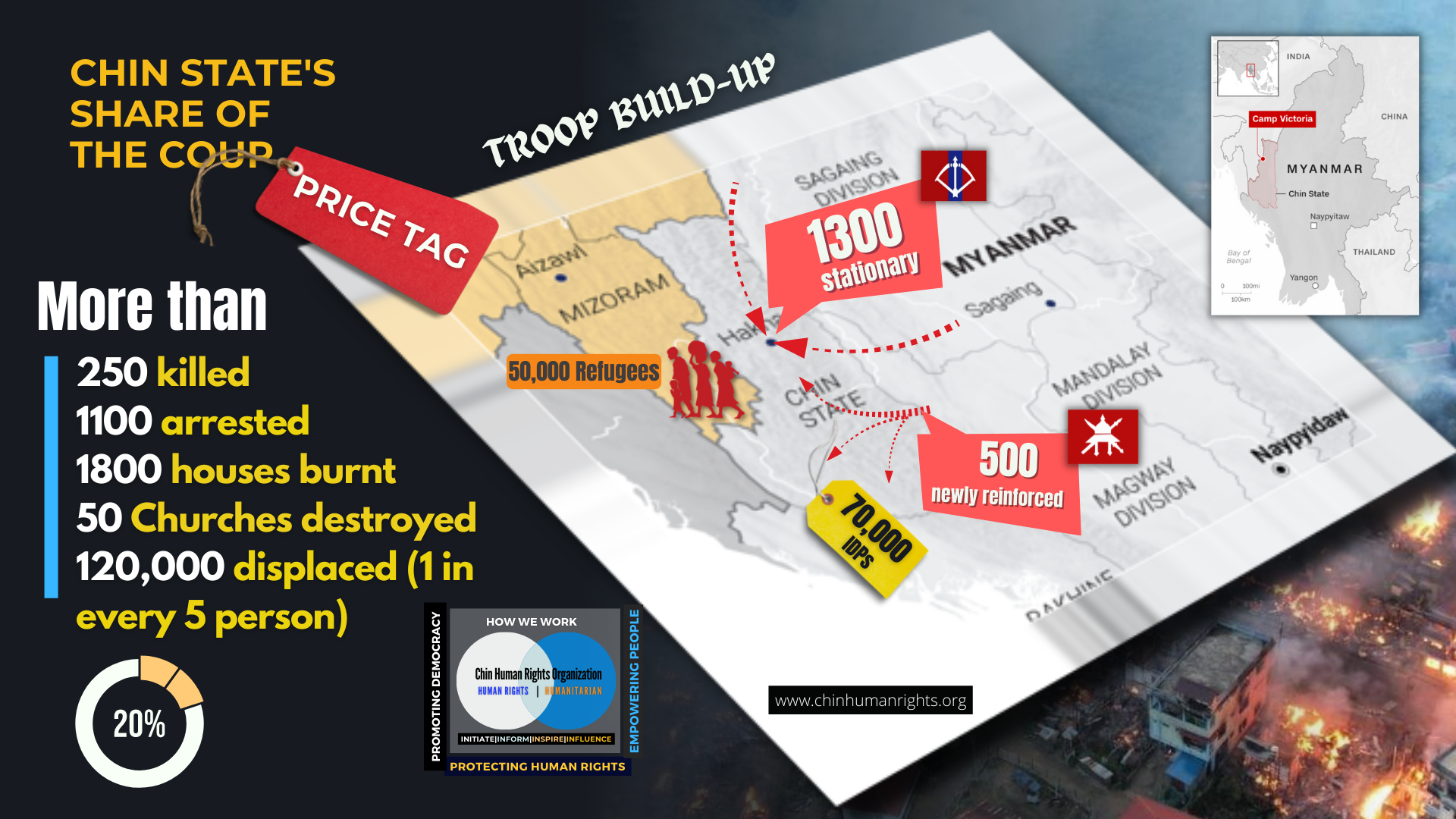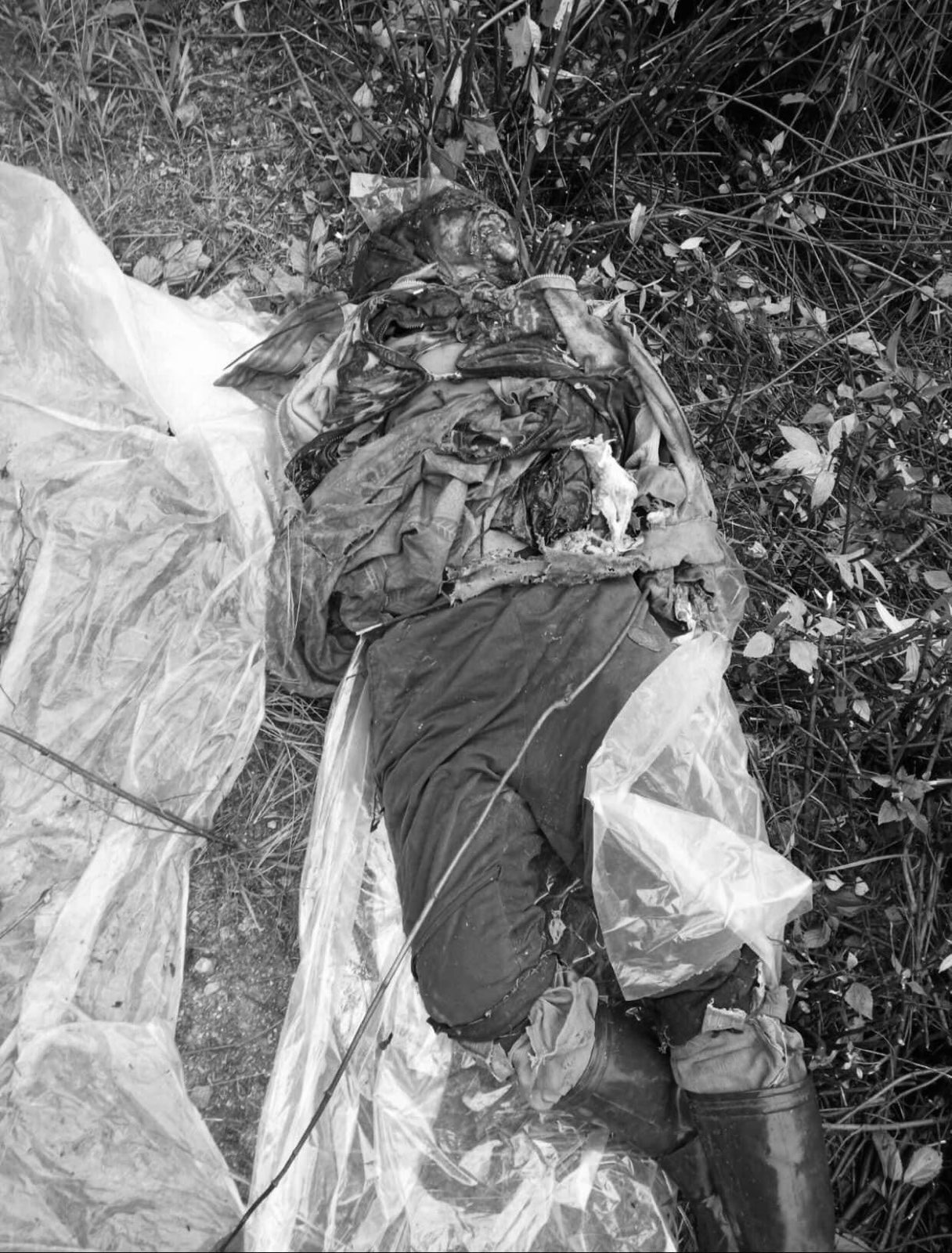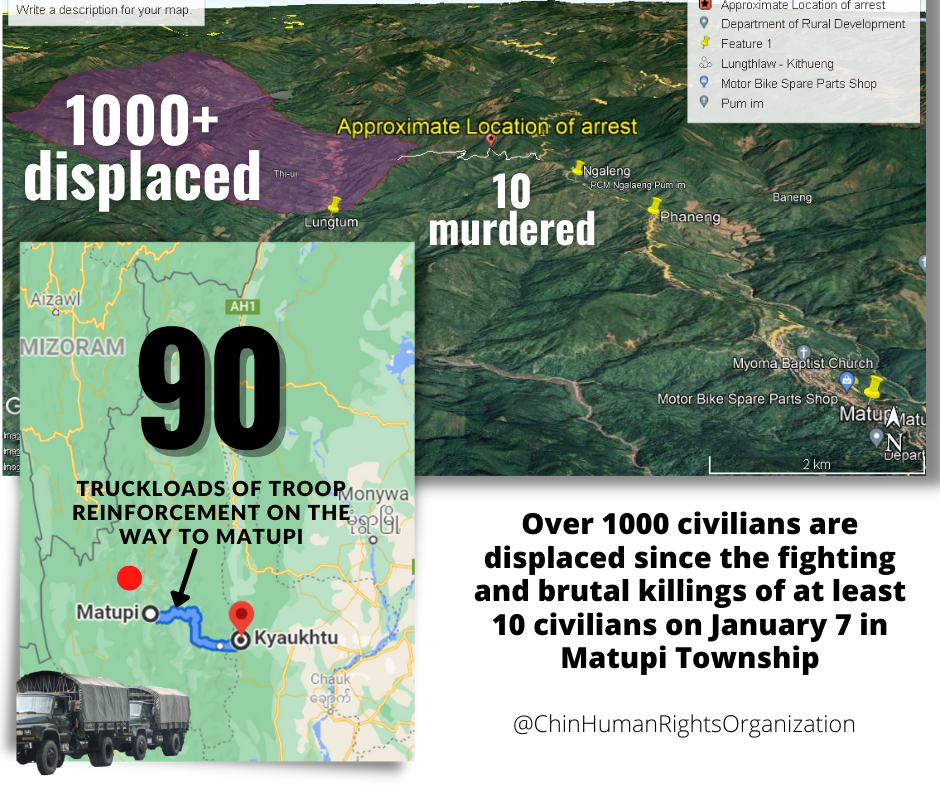
Testimony of CHRO at the 4th Hearing of International Parliamentary Inquiry on Myanmar
Chin State with a Christian majority and a population of just below half a million, or one percent of the country’s population, has not escaped the kinds of atrocities and terrors at the hands of the Myanmar Army. In fact, the state has been one of the primary targets of military’s campaign of annihilation.









